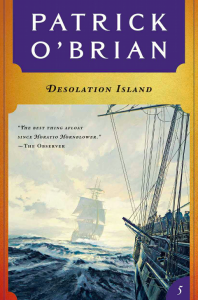 I’ve been working my way through Patrick O’Brian’s Aubrey/Maturin series over the last few weeks; and in a comment of my review of The Mauritius Command a reader asked me to say a few words about the “inner” and “outer” stories I was speaking of, as she wasn’t familiar with the terms. I replied directly to her comment; but on the principle that others might be confused as well, here’s my reply:
I’ve been working my way through Patrick O’Brian’s Aubrey/Maturin series over the last few weeks; and in a comment of my review of The Mauritius Command a reader asked me to say a few words about the “inner” and “outer” stories I was speaking of, as she wasn’t familiar with the terms. I replied directly to her comment; but on the principle that others might be confused as well, here’s my reply:
Those are my terms to describe what’s going on; I define them in my review of Master and Commander. In a nutshell: the outer story in an Aubrey/Maturin novel is a tale of sea-going adventure, and Jack Aubrey is its hero. It’s a classic romance: the action is external to the characters (Jack isn’t much given to introspection.) But there’s also an “inner” story, “inner” because it involves change within the characters, as in a classic novel. Stephen Maturin is always the viewpoint character of the “inner” story; sometimes he is its hero, and other times he’s simply the means by which we see it.
In terms of this novel, then, the outer story involves Jack taking a squadron to Mauritius and routing the French. The inner story involves Lord Clonfert’s reactions to Jack and his attempts to surpass Jack, from Stephen’s point of view.
I draw the distinction because it’s possible to read the books just for the outer story…but it’s sometimes confusing, because the divisions between books are usually determined by the inner story.
And in fact, it was while re-reading Desolation Island that I finally got an inkling of what was going on. On first reading the book took me quite aback, because it concludes with Jack Aubrey and his crew nearly shipwrecked on an island in the middle of the Great Southern Ocean (the “Desolation Island”) of the title. I hadn’t yet twigged to the “inner” story and the “outer” story in O’Brian’s books; but on further inspection I found that the book ends just at the climax of the inner story.
From Jack Aubrey’s point of view, the tale is quite simple. He’s ordered to bring the Leopard (known universally as the “horrible old Leopard in the service) to Australia and then the far East and attach it to the squadron there. The voyage is rife with incident, including “gaol fever” among some convicts being transported to Australia; the fever spreads to the crew, leaving her undermanned, and then there are storms and an encounter with a Dutch ship of 74 guns, and all of it ends up leaving captain and crew on the island for a period of time.
That’s the outer story; and for nautical flavor it can’t be beat.
But then there’s the inner story, in which Stephen Maturin, in his role as an agent of Naval Intelligence, plays cat and mouse with spies both French and American. If you ask how he can do that while on a relatively small vessel on route from England to the Far East, and I can but reply “Very well indeed.”
This is the first time we see the United States playing any significant role in the series; but by its internal chronology the War of 1812 is fast approaching. O’Brian chose the horrible old Leopard, a historical ship, to that precise end. In 1807 the captain of the Leopard fired upon and ultimately boarded the USS Chesapeake, looking for British deserters. This caused quite a ruckus at the time, and was one of the immediate causes of the war that followed.
Though it took me aback on first reading, Desolation Island has grown on me considerably since, as I’ve gained a deeper appreciation for the structure of the plot; and I’d say it’s now my second favorite of the early part of the series, right after H.M.S. Surprise.
















